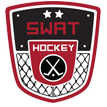U-9 half-ice program
Hockey Canada has mandated half-ice hockey for all U-9 hockey players. According to Hockey Canada, U-9 hockey should be delivered through a progressive, learn-to-play teaching curriculum for 7-8-year-olds. Children learn best through practice drills and skill sessions, as well as informal games like shinny, freeze tag and obstacle courses.
The skills of skating, puck control, passing and shooting are introduced and refined one step at a time. The focus should always be on fun and skill development, but the early years of hockey should also allow youngsters to experience fitness, fair play and cooperation.
Advantages to smaller-surface games model
- Two times puck touches
- All players are close to the play at all times and have much more opportunity for puck touches. Regardless of the skill level or the ability of each player, their opportunities to be engaged in the play are doubled when the playing area is smaller.
- Six times shot attempts
- There are six times as many shots on goal in a cross-ice or half-ice game because players are closer to the puck at all times and the puck finds its way to the net much more often.
- Three times shots on goal
- Players are much closer to the net, skate a shorter distance from goal to goal and have increased opportunities for offensive play.
- Two times pass attempts
- Players are observed passing and attempting to pass the puck more often due to proximity to other players.
- Five times passes received
- In smaller spaces, more passes are attempted and most of these passes are five to 10 feet in length. When passes are shorter, accuracy improves and players have more success receiving the pass. Players also start to understand the important of team puck possession.
